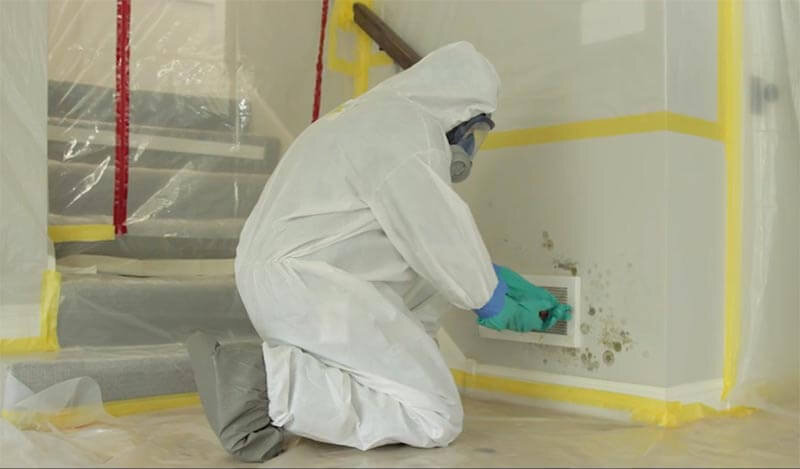Guaranteeing Post Remediation Verification Accuracy
Guaranteeing Post Remediation Verification Accuracy
Blog Article
Your Ultimate Overview to Message Mold And Mildew Removal Methods
Browsing the realm of post-mold remediation strategies is a thorough procedure that requires focus to information and a comprehensive understanding of the ins and outs included. In the after-effects of mold infestation, recognizing exactly how to efficiently eliminate the mold and mildew and avoid its reoccurrence is critical for preserving a healthy and balanced interior environment. From selecting the right cleansing and decontaminating approaches to carrying out approaches for lasting mold prevention, each action in the remediation trip plays a critical role in guaranteeing an effective end result. As we get started on this exploration of post-mold removal techniques, we will certainly reveal the essential techniques and ideal practices that can help you restore your area to its pre-mold condition and safeguard it against future mold dangers.
Recognizing Post-Mold Remediation Refine
After finishing the mold remediation process, it is essential to recognize the post-mold removal techniques that are needed to guarantee a effective and detailed clean-up. As soon as the mold has actually been removed, the following step entails cleansing and disinfecting the affected areas to prevent any type of regrowth of mold and mildew.
Furthermore, conducting a last evaluation post-remediation is crucial to make sure that all mold and mildew has been effectively eliminated. This assessment should include a comprehensive aesthetic check as well as potentially air tasting to validate the absence of mold spores in the air. If the examination reveals any type of sticking around mold and mildew, additional remediation might be essential. Educating residents on preventive steps such as managing wetness levels and immediately resolving any kind of water leakages can aid keep a mold-free setting.
Effective Cleaning and Disinfecting Methods

Avoiding Future Mold Growth

Importance of Correct Ventilation
Correct air flow plays a vital role in protecting against wetness buildup, a crucial aspect in mold development within indoor settings. Effective air flow systems assist get rid of excess moisture from the air, reducing the opportunities of mold spores locating the moisture they require to spread and sprout. Without adequate air flow, indoor spaces can end up being a reproduction ground for mold, bring about possible wellness dangers and structural damage.
By making sure proper air flow, air flow systems can also assist in drying damp areas faster after water damages or flooding incidents, additionally discouraging mold and mildew growth. testing air quality after mold remediation. Precede like washrooms, basements, attics, and kitchens where wetness levels often tend to be higher, mounting and preserving efficient air flow systems is important in useful site preventing mold and mildew infestations

Surveillance and Upkeep Tips
Given the essential function that appropriate ventilation plays in stopping mold and mildew growth, it is crucial to establish reliable tracking and upkeep ideas to ensure the ongoing functionality of air flow systems. Regular examinations of ventilation systems should be carried Full Report out to check for any kind of signs of clogs, leaks, or breakdowns that could restrain proper air movement. Monitoring moisture levels within the property is likewise crucial, as high moisture can add to mold development. Installing a hygrometer can assist track moisture degrees and alert home owners to any type of spikes that might require interest. In addition, guaranteeing that air filters are consistently cleaned up or changed is essential for preserving the performance of the ventilation system. Carrying out a timetable for routine maintenance jobs, such as air duct cleaning and a/c system inspections, can help stop concerns prior to they escalate. By staying aggressive and conscientious to the problem of air flow systems, residential property proprietors can effectively reduce the danger of mold and mildew regrowth and keep a healthy and balanced indoor atmosphere.
Final Thought
To conclude, post-mold remediation techniques are essential for ensuring a tidy and risk-free setting. Comprehending the process, executing effective cleansing and sanitizing techniques, avoiding future mold development, preserving correct ventilation, and regular surveillance are all important action in the removal process. By adhering to these standards, you can successfully remove mold and prevent its return, working or advertising a healthy living room for all passengers.
In the aftermath of mold and mildew problem, knowing how to successfully remove the mold and mildew and prevent its reoccurrence is extremely important for keeping a healthy and balanced indoor atmosphere. As soon as the mold has actually been removed, the next step entails cleansing and sanitizing check this site out the impacted locations to avoid any kind of regrowth of mold - After mold remediation. After eliminating noticeable mold and mildew development, it is important to cleanse all surfaces in the afflicted location to remove any kind of staying mold and mildew spores. To even more improve mold and mildew avoidance procedures, it is important to address underlying concerns that originally led to mold development.Given the essential duty that proper ventilation plays in avoiding mold growth, it is critical to develop reliable monitoring and maintenance tips to ensure the ongoing performance of air flow systems
Report this page